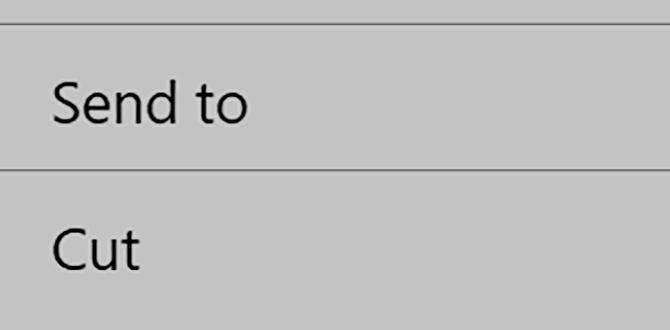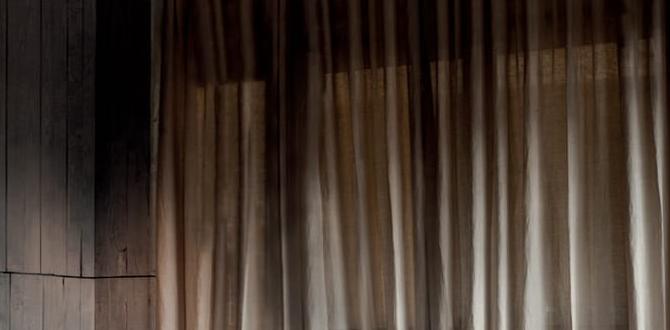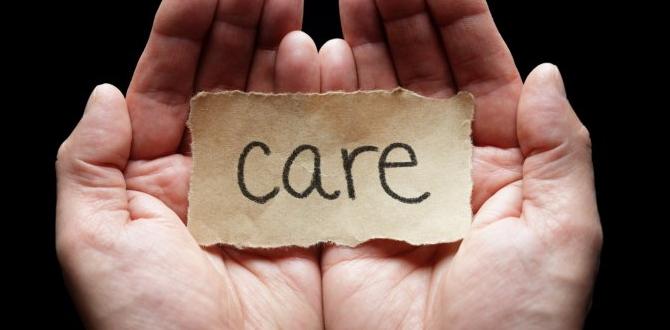Have you ever wondered what temperature is best for outdoor painting? You might think any day will do, but that’s not true. The right temperature can make a big difference. Imagine painting a fence on a hot, sunny day. The paint could dry too quickly, leaving unsightly streaks. Or picture yourself painting in the cold. The paint might not stick well at all!
Knowing what temp for outdoor painting is key to a smooth job. Did you know that experts often recommend painting when it’s between 50°F and 85°F? This range helps the paint dry at the right speed and stick nicely. Choosing the perfect temperature can save you time and extra work.
So, next time you’re ready to tackle that painting project, think about the weather. Understanding the ideal temperature for outdoor painting can turn a tough task into a fun and easy one. Ready to learn more about how to get the best results? Let’s dive in!
What Temp For Outdoor Painting: Ideal Conditions Explained When It Comes To Outdoor Painting, The Temperature Plays A Crucial Role In Ensuring A Successful And Long-Lasting Finish. Understanding The Ideal Temperature Can Help You Avoid Common Pitfalls Associated With Weather Conditions. Here’S A Closer Look At What Temperature Is Best For Outdoor Painting, Along With Key Considerations For A Flawless Project. The Ideal Temperature Range For Most Paints, The Ideal Temperature For Outdoor Application Typically Falls Between 50°F And 85°F (10°C To 30°C). Within This Range, The Paint Adheres Well To Surfaces, Dries Evenly, And Cures Properly. If The Temperature Dips Below 50°F, The Paint May Not Adhere Correctly, Leading To Peeling Or Blistering. Conversely, Painting Above 85°F Can Result In Rapid Drying, Which Can Cause Issues Like Brush Marks Or An Uneven Finish. Humidity Levels In Addition To Temperature, Humidity Levels Significantly Affect Outdoor Painting. Ideally, Humidity Should Be Between 40% And 70%. High Humidity Can Slow Drying Times And May Lead To Mildew Growth, While Low Humidity Can Cause The Paint To Dry Too Quickly, Preventing Proper Adhesion And Finishing. Considerations For Different Paint Types Different Types Of Paint May Have Varying Temperature Requirements. For Example, Latex Paints Generally Perform Better In Moderate Temperatures, While Oil-Based Paints Can Tolerate Slightly Cooler Temperatures. Always Check The Manufacturer’S Recommendations Before Starting Your Project, As They Often Provide Specific Temperature Guidelines. Preparing For Changing Weather Conditions Weather Patterns Can Be Unpredictable, Especially In Early Spring Or Late Fall. To Ensure The Best Outcome, Consider The Forecast And Plan Your Painting Project For A Day When The Temperature Is Likely To Stay Within Your Target Range. Additionally, It Might Be Beneficial To Use A Paint Additive That Enhances Adhesion And Drying In Less-Than-Ideal Conditions. Conclusion Choosing The Right Temperature For Outdoor Painting Is Essential For Achieving A Beautiful, Durable Finish. By Keeping The Temperature Between 50°F And 85°F And Being Mindful Of Humidity Levels, You Can Set Yourself Up For A Successful Painting Experience. Always Remember To Read Product Labels And Adjust Your Techniques Based On The Specific Paint Type You Are Using. Happy Painting!

What Temp for Outdoor Painting
The perfect temperature for outdoor painting usually ranges from 50°F to 85°F. Did you know that temperatures below 50°F can cause paint to dry slowly or not adhere properly? Paint can also bubble when it’s too hot. For best results, it’s essential to check the weather before starting your project. Proper temperature helps your paint look nice and last longer. So, what’s your next painting adventure?Optimal Temperature Range for Outdoor Painting
Ideal temperature range for various types of paints (latex, oilbased). Effects of temperature fluctuations on the paint job.The best temperature for outdoor painting is between 50°F and 85°F. This range works well for most paints, like latex and oil-based ones. Here’s a quick look:
- Latex Paint: Works best at 50°F to 85°F.
- Oil-Based Paint: Ideal between 40°F and 90°F.
Temperature changes can cause problems. If it’s too hot, paint may dry too fast, leading to cracks. If it’s too cold, paint can stay wet too long, which might cause bubbles. Keep an eye on the weather for the best results!
What should I consider when painting outdoors?
Consider the temperature and weather changes. It’s best to paint when the temperature is steady.
Factors Influencing Temperature for Outdoor Painting
Importance of humidity and dew point alongside temperature. Influence of direct sunlight and shade on painting conditions.Temperature isn’t the only player in the outdoor painting game. Humidity and the dew point can change the paint’s drying dance. Too much humidity makes paint soggy. Direct sunlight can bake your paint, while shade provides a cozy spot for it to dry properly. Remember, a hot, sunny day is great for swimming, but not for painting. Choose your painting spot wisely!
| Condition | Effect on Painting |
|---|---|
| High Humidity | Paint takes longer to dry. |
| Low Humidity | Paint dries quickly and smoothly. |
| Direct Sunlight | Can cause blistering and uneven texture. |
| Shade | Allows even drying and good adhesion. |
Preparing for Outdoor Painting in Different Temperatures
Tips for choosing the right time of day for painting. Best practices for preparing surfaces in varying temperatures.Picking the right time for outdoor painting can save your day—and your paint! Early morning or late afternoon are usually best. But, if you’re painting in hot weather, aim for cooler spots. This keeps paint from drying too fast and helps avoid streaks.
| Temperature Range | Best Time to Paint |
|---|---|
| 50°F – 70°F | Morning or late afternoon |
| Above 70°F | Avoid noon heat |
Before painting, always prepare your surfaces. Clean off dirt and grease. In cold weather, let your surfaces warm up a bit. Paint and surfaces need to be friends, not foes! Remember, paint sticks better on a clean surface, much like peanut butter on toast!
So, keep the temperature in check for happy painting!
Common Issues When Painting Outside in Unfavorable Temperatures
Problems caused by painting in too cold or too hot conditions. Signs that painting conditions are not ideal.Painting outside can be tricky. If it’s too cold or too hot, problems can arise. In cold weather, paint takes longer to dry. This can lead to smudges and marks. In hot weather, paint can dry too fast. This causes cracks and peeling. Watch for these signs of bad conditions:
- Paint drips or runs
- Rough textures
- Dark patches forming
- Dark patches forming
These issues can spoil your work. Always check the temperature before starting.
What is the best temperature for outdoor painting?
The best temperature for outdoor painting is between 50°F and 85°F. Stay within this range for great results.
Tools and Techniques for Monitoring Temperature
Recommended tools for measuring temperature and humidity. Techniques to adapt your painting approach based on weather conditions.To paint outdoors successfully, it helps to know the temperature and humidity. Use tools like a digital thermometer and a hygrometer to measure these conditions. Adjust your painting plans based on the weather. Here are a few tips:
- **Wait for ideal temperatures**: Paint when it’s between 50°F and 85°F.
- **Check humidity levels**: High humidity can make paint dry slowly.
- **Choose the right time**: Early morning or late afternoon is usually best for outdoor painting.
These easy tools and techniques will help you create beautiful artwork, no matter the weather!
What temperature is best for painting outdoors?
The best temperature for painting outdoors is usually between 50°F and 85°F. Painting below or above this range can affect your results!
Conclusion
When painting outdoors, aim for a temperature between 50°F and 90°F. This range helps your paint stick and dry properly. Avoid extreme heat or cold, which can ruin your project. Be sure to check the weather before starting. For more tips on outdoor painting, dive into articles that explain paint types and techniques. Happy painting!FAQs
Certainly! Here Are Five Related Questions On The Topic Of Temperature For Outdoor Painting:Sure! When it’s too hot or too cold, paint can behave strangely. If it’s too hot, the paint might dry too quickly and not stick well. When it’s too cold, the paint can take a long time to dry. So, we should check the weather before we start painting outside!
Sure! Please provide me with the question you’d like me to answer.
What Is The Ideal Temperature Range For Applying Exterior Paint?The best temperature for painting outside is between 50°F and 85°F (10°C to 29°C). When it’s too hot or too cold, the paint can dry unevenly. We want the paint to stick well and look good! If you paint in this temperature range, you’ll have better results. Always check the weather before you start!
How Does Low Temperature Affect The Drying Time Of Outdoor Paint?Low temperatures make outdoor paint take longer to dry. When it’s cold, the paint can’t evaporate as fast. This means you have to wait longer before you can touch or walk on it. If you can, try to paint when it’s warm outside. That way, your paint dries quicker!
Can You Paint Outside In Temperatures Above 90°F, And What Precautions Should Be Taken?Yes, you can paint outside when it’s really hot, like above 90°F. But you should take some care. Drink lots of water to stay cool. Use light-colored clothes and a hat to protect yourself from the sun. Try to paint in the early morning or late afternoon when it’s cooler.
What Are The Effects Of High Humidity On Outdoor Painting Projects During Various Temperatures?High humidity can make painting outside tricky. When it’s hot and humid, the paint may dry too slowly. This can lead to drips and runs on your work. If it’s cool and humid, the paint might not stick well at all. It’s best to paint when the air is dry and not too hot or cold.
Is It Advisable To Paint During Early Morning Or Late Afternoon When Temperatures Fluctuate?It’s better to paint in the late afternoon when temperatures are more steady. In the morning, things can change quickly. If it gets too hot or cold, paint might not stick well. So, let’s choose the late afternoon for a smoother job!





